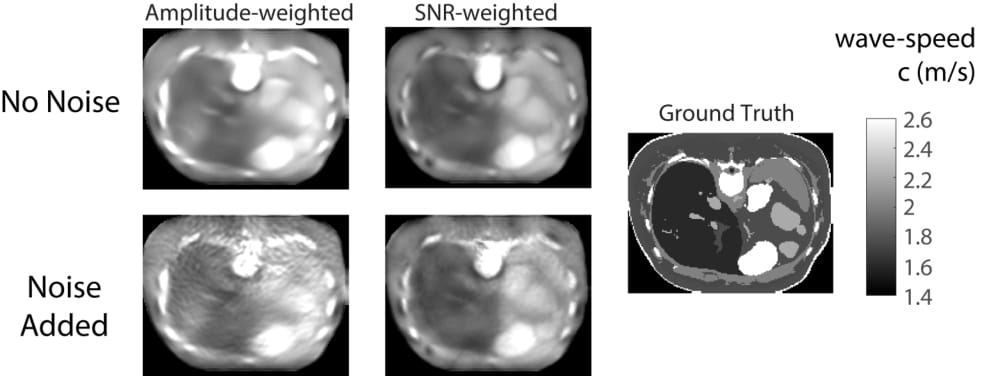Cemre Ariyurek has presented her phd thesis titled ” Frequency Response Analysis and Reconstruction Weighting Schemes for MR Elastography ”
Abstract
Magnetic resonance elastography (MRE) non-invasively and quantitatively assesses the elasticity of the in-vivo tissue. In MRE, shear waves are induced to the tissue by an actuator, while phase-contrast images are obtained by magnetic resonance imaging (MRI). Finally, elasticity maps are generated using displacement information carried by phase-contrast images.
The direction and frequency of the induced shear waves could be crucial in MRE. Here, it is demonstrated by the frequency response MRE simulations that modes of the shear waves can be observed in the brain during MR elastography with high shear wave displacement values at the mode frequencies. High shear wave displacements, 10-20 times of the applied displacement, were observed at mode frequencies in phantom MRE experiments.
The second part of the thesis focuses on weighting schemes to combine multiple elasticity maps reconstructed from data collected for different excitation frequencies and motion direction.
A new weighting scheme, which maximizes the signal-to-noise ratio (SNR) of the final wave speed map, has been proposed for tomoelastography and Helmholtz inversions. For both inversion techniques, considering the noise on the complex MRI signal, the SNR of the reconstructed wave speed map was formulated by an analytical approach assuming a high SNR. Thus, with the proposed SNR weighting method, while not altering the accuracy or spatial resolution of the wave speed map, the SNR of the wave speed map has been improved by 2 and 1.6 times for tomoelastography and Helmholtz inversion, respectively. The bias occurring for low SNR data cases was eliminated in tomoelastography and reduced in Helmholtz inversion with the proposed SNR-weighted reconstructions.
Similarly, a strain-based weighting for MRE reconstruction has been introduced. Experimental results demonstrated that strain weights could prevent artifacts at the boundaries of encapsulated tumors or tissues with membranes; however, further examination is required.
In this thesis, two independent contributions have been made to the field of magnetic resonance elastography. By showing the existence of modes of the shear waves in the body, new fronts are opened in the MRE actuation methods and safety. The improvements in the elasticity map inversions could lead to the routine use of MRE in clinical practice.
